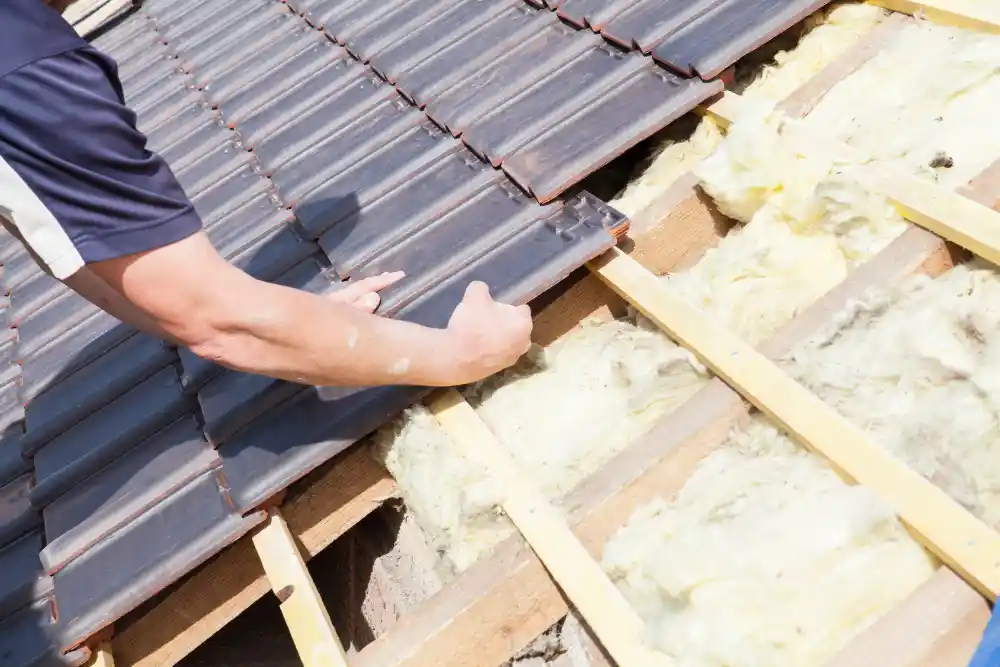Introduction to New Roof Installation Cost
When considering a new roof installation in Ireland, understanding the associated costs is essential for homeowners planning renovations or new constructions. In 2024, the cost of roof installation reflects various factors, including material selection, labor charges, property size, and regional differences. With an emphasis on quality craftsmanship and weather resilience, roofing solutions across Ireland cater to both urban and rural needs.
This guide aims to provide a comprehensive overview of the key elements influencing the cost of new roof installations in Ireland, highlighting typical price ranges, material options, and practical tips for budgeting effectively. Whether you are considering traditional slate, modern metal roofing, or cost-effective asphalt shingles, understanding these factors will help you make informed decisions that align with your financial plans and aesthetic preferences.
Stay informed to ensure your new roof installation project is smooth, well-executed, and aligned with your expectations.
Average Cost of New Roof Installation in Ireland
When considering a new roof installation, understanding the average costs can help homeowners plan and budget effectively. In Ireland, the typical price range for new roof installations varies significantly based on factors such as the type of roofing material, the size of the property, and the region where the work is being carried out.
General Price Range
The average cost of installing a new roof in Ireland generally falls between €5,000 and €15,000. This wide range is due to variations in roofing materials and specific requirements of each project. Standard materials such as asphalt shingles tend to be more affordable, while premium options like slate or copper can increase overall expenses.
Regional Cost Comparisons
- Dublin: Homeowners in Dublin and other major cities can expect higher costs due to increased labor rates and demand. The price for a new roof installation in Dublin typically ranges from €8,000 to €20,000, depending on the complexity of the project and the materials used. Factors such as accessibility, higher contractor fees, and urban logistical challenges contribute to these elevated prices.
- Rural Areas: In contrast, rural areas often see lower installation costs. Homeowners outside major cities may find their new roof installations costing between €5,000 and €12,000. The reduced expenses are attributed to lower labor rates and fewer logistical issues.
Additional Factors Influencing Cost
- Type of Roofing Material: Basic materials such as asphalt shingles or corrugated metal are more budget-friendly compared to high-end options like clay tiles, natural slate, or copper.
- Roof Size and Complexity: Larger roofs and those with intricate designs or multiple slopes will naturally require more materials and labor, driving up the cost.
- Labor and Permits: Labor rates can differ significantly between regions, and obtaining necessary permits might add to the overall expenditure.
Factors Affecting New Roof Installation Costs
Type of Roofing Material
One of the most significant factors influencing the cost of a new roof installation is the type of roofing material selected. Common materials such as asphalt shingles are often the most budget-friendly option, offering a balance of durability and cost-effectiveness. In contrast, slate is among the most expensive, known for its exceptional longevity and aesthetic appeal. Tile roofing, which can include clay or concrete tiles, offers durability and a distinctive appearance but comes at a higher price due to the weight and specialised installation techniques required. Metal roofing is another option that has gained popularity for its durability and energy efficiency, but it tends to be more costly upfront. Each material presents a different price range, affecting the overall budget for the project.
Roof Size and Design Complexity
The size of the roof plays a pivotal role in determining the total installation cost. A larger roof requires more materials and extended labour hours, driving up the expense. Additionally, the design complexity of the roof can significantly influence the price. Simple, single-slope roofs are more cost-effective to install, while intricate designs involving multiple slopes, gables, or dormers can be considerably more expensive. The pitch (or steepness) of the roof also impacts costs—steeper roofs are more challenging to work on and require additional safety measures, resulting in higher labour charges.
Labour Costs
In 2024, labour costs for roofing projects continue to be influenced by market trends such as labour shortages, wage increases, and the overall demand for skilled contractors. Regions experiencing a higher demand for construction services often see elevated labour rates, which directly impact roofing installation expenses. Additionally, the skill level of the contractor and their reputation can affect pricing, as highly skilled and well-reviewed professionals may charge a premium for their expertise.
Permits and Regulations
Another essential factor to consider is the cost associated with permits and adherence to local regulations. Roofing projects typically require permits to ensure the work complies with local building codes and safety standards. The cost of these permits varies by municipality and can add a significant amount to the overall budget. Additionally, there may be fees related to inspections and potential adjustments needed to meet code requirements, especially in regions with stringent building regulations. Ensuring compliance not only adds to the upfront cost but also prevents future expenses linked to non-compliance penalties or rework.
Additional Costs to Consider
When planning for any major home renovation or construction project, understanding the potential additional costs is crucial for both budgeting and decision-making. Here are some key areas where homeowners might face extra expenses:
Gutter Installation and Maintenance
Proper gutter and drainage systems are essential for protecting your home from water damage. While the installation of gutters may not always be included in the main project budget, it is an essential consideration that can add significant costs. The type of material chosen—such as aluminium, copper, or vinyl—will impact the price, with copper being the most expensive but also the most durable. Homeowners should also consider the cost of ongoing maintenance, such as periodic cleaning and repairs, which can help extend the life of the system and prevent issues like blockages or leaks.
Insulation and Energy Efficiency Improvements
Investing in high-quality insulation and energy-efficient improvements can raise initial project costs, but it offers substantial long-term savings. Upgrading to better insulation materials or installing energy-efficient windows and doors helps maintain indoor temperature, reducing energy bills over time. While these upgrades may represent an added upfront expense, they can increase the value of the property and lead to significant cost savings in heating and cooling over the years. It’s important for homeowners to weigh the initial investment against the potential for long-term benefits when considering energy efficiency improvements.
Skylights and Custom Additions
Optional features such as skylights and other custom additions can enhance the aesthetics and functionality of a home but come at a price. The installation of skylights involves not only the cost of the skylight unit itself but also potential structural modifications to the roof, which can increase labour costs. Custom additions such as unique windows, decorative elements, or speciality materials can similarly drive up expenses. Homeowners should plan for these features carefully to ensure they align with their budget and overall vision for the project.
Considering these additional costs during the initial planning stages can help homeowners avoid unexpected expenses and make informed decisions that align with both their budget and long-term goals.

Cost-Saving Tips for Homeowners
Owning a home comes with ongoing maintenance and improvement projects that can be costly. However, with strategic planning, homeowners can save significantly while still ensuring quality results. Here are some valuable tips for selecting cost-effective materials, negotiating with contractors, and scheduling projects wisely.
1. Select Cost-Effective Materials Without Compromising Quality
One of the biggest challenges homeowners face is balancing cost and quality when choosing materials. To make smart choices:
- Explore Alternative Options: Instead of traditional hardwood, consider engineered wood or high-quality laminate, which can provide a similar aesthetic at a fraction of the price.
- Look for Sales and Discounts: Many home improvement stores offer seasonal discounts and clearance sales where you can find high-quality materials at reduced prices.
- Prioritize Durability: While cheaper options may seem appealing, choosing durable materials ensures long-term savings by reducing the need for frequent replacements or repairs.
2. Obtain Multiple Quotes and Negotiate with Contractors
Hiring contractors for home improvement projects is a significant investment. To ensure you’re getting the best deal:
- Get At Least Three Quotes: By comparing multiple quotes, you can gauge the average market rate for your project and avoid overpriced estimates.
- Negotiate Terms: Don’t be afraid to discuss pricing, payment plans, or scope adjustments with contractors. Many are willing to offer discounts or flexible terms to secure a project.
- Check References and Reviews: Opt for contractors with strong recommendations and positive reviews, as quality work can prevent costly future repairs.
3. Schedule Projects During Off-Peak Seasons
Timing plays an essential role in home project costs. Most homeowners undertake renovations during peak seasons, driving up demand and prices. To save money:
- Plan Projects for Off-Season Periods: For example, scheduling renovations during late fall or winter often results in lower contractor rates, as demand is typically lower.
- Flexible Start Dates: If you can be flexible with your project timeline, you might benefit from off-peak discounts.
- Contractor Availability: During slower months, contractors may have more availability, resulting in quicker project completion and better overall service.
By applying these cost-saving strategies, homeowners can achieve quality improvements while maintaining their budget. Thoughtful planning and smart decision-making can turn home projects into rewarding investments without unnecessary financial strain.
Government Grants and Financial Assistance for Homeowners in Ireland (2024)
In 2024, the Irish government continues to provide a range of grants and financial assistance to help homeowners improve their properties’ energy efficiency, undertake essential renovations, and promote sustainable living. Below, we outline some of the main available grants and subsidies, eligibility criteria, and how to apply.
1. Overview of Available Grants and Subsidies
a. Sustainable Energy Authority of Ireland (SEAI) Home Energy Grants The SEAI offers a variety of grants aimed at increasing energy efficiency in homes. These include:
- Home Energy Upgrade Grants: For comprehensive energy retrofit projects, covering insulation, window upgrades, and more.
- Individual Energy Efficiency Measures: Such as grants for attic and wall insulation, heat pumps, solar panels, and heating controls.
b. Better Energy Warmer Homes Scheme This scheme targets homeowners in older, less energy-efficient homes and provides free energy efficiency improvements, such as attic and cavity wall insulation.
c. Local Authority Home Improvement Grants Local councils may offer specific grants for critical home repairs or adaptations for elderly or disabled homeowners.
d. Housing Adaptation Grant for People with a Disability This grant supports homeowners or tenants who need to make adaptations to their homes to cater for a disability. These adaptations can include changes such as stairlifts, accessible bathrooms, and ramps.
e. Home Renovation Incentive While the Home Renovation Incentive scheme has concluded, similar tax reliefs or potential new incentives for 2024 may be introduced for renovations related to sustainability and energy efficiency.
2. Eligibility Requirements
Eligibility for these grants often varies based on the type of assistance and the applicant’s circumstances:
a. SEAI Home Energy Grants
- Must be the owner of a home built and occupied before 2011 (for insulation and heating control grants).
- For heat pump grants, homes must have been constructed before 2021.
- Applicants must use SEAI-registered contractors to be eligible.
b. Better Energy Warmer Homes Scheme
- Available to homeowners who receive certain social welfare payments, such as the Fuel Allowance, Working Family Payment, or Jobseeker’s Allowance (with certain conditions).
- The home must be older and lack energy-efficient measures.
c. Housing Adaptation Grant for People with a Disability
- Available to both homeowners and private tenants.
- Means-tested, with the grant amount dependent on household income.
3. Application Process
Step-by-Step Guide to Applying
a. SEAI Home Energy Grants
- Initial Assessment: Review the SEAI’s website to determine eligible grant measures.
- Registered Contractor: Contact an SEAI-registered contractor for an energy assessment and quote.
- Apply Online: Submit your application through the SEAI online portal.
- Approval and Work: Await grant approval before commencing any work.
- Completion and Payment: After the work is completed, submit proof of completion to receive the grant payment.
b. Better Energy Warmer Homes Scheme
- Eligibility Check: Confirm your eligibility through the SEAI or relevant authorities.
- Application: Submit an application form, which can be downloaded from the SEAI’s website or obtained by contacting them directly.
- Inspection and Work: An energy assessment is conducted, followed by the necessary improvements carried out by approved contractors.
c. Local Authority and Housing Adaptation Grants
- Contact Local Authority: Reach out to your local council for specific forms and detailed application processes.
- Submit Supporting Documents: Include proof of income, medical evidence (for adaptation grants), and any other required documents.
- Approval: Wait for approval and further instructions before starting any renovation.
Homeowners in Ireland in 2024 have numerous opportunities to access financial assistance and government grants to enhance their living conditions and contribute to a greener future. For further details and updated information, visiting the SEAI website and contacting your local authority is recommended.
How to Choose the Right Roofing Contractor: Key Considerations
Selecting the right roofing contractor is essential for ensuring the longevity and quality of your roof. With many options available, it’s important to know how to identify a reliable contractor who meets your needs. Here are the key considerations to guide you through this decision:
1. Check Credentials and Certifications
A trustworthy roofing contractor should be properly licensed and insured. Verify that they hold the necessary state or local licenses to operate legally in your area. Additionally, insurance is crucial; it protects both you and the workers in case of accidents. Ensure the contractor has general liability and worker’s compensation coverage to avoid potential legal and financial issues.
2. Ask for References and Reviews
Reputation speaks volumes. Always ask for references from previous clients and take the time to contact them. Positive feedback from past projects is a strong indicator of the contractor’s reliability and quality of work. Additionally, check online reviews on platforms such as Google, Yelp, or the Better Business Bureau to gain further insights into their service quality and customer satisfaction.
3. Evaluate Experience and Expertise
Experience matters when it comes to roofing. Inquire about the contractor’s years in the industry and their expertise in handling specific roofing types or materials you are considering for your project. Contractors with a proven track record and extensive experience are more likely to provide high-quality workmanship and effective problem-solving.
4. Get Multiple Quotes
Don’t settle for the first contractor you find. Obtain quotes from at least three different contractors to compare pricing, project timelines, and services offered. Beware of estimates that seem too good to be true, as they may indicate subpar materials or cutting corners. A fair price should reflect quality materials, skilled labour, and a reasonable timeline.
5. Review Warranties Offered
A reputable roofing contractor should offer warranties that cover both materials and workmanship. Ensure that you understand the terms and duration of these warranties before proceeding. Manufacturers’ warranties typically cover material defects, while contractor warranties cover the installation. Knowing your protection in case of defects or future issues can provide peace of mind.
6. Understand Contract Details
Before any work begins, ensure all project details are put in writing. This should include project timelines, payment schedules, materials to be used, and any other relevant terms. A detailed contract minimizes misunderstandings and provides a reference point should any issues arise during the project.
7. Look for Local Expertise
Choosing a local contractor has several benefits. They are familiar with the local building codes, weather conditions, and common roofing materials suited for the area. Additionally, local contractors are more accessible for future maintenance and warranty issues.+
Summary
When planning for a new roof installation in Ireland, there are several key considerations to ensure the process is both smooth and financially manageable. Firstly, understanding the various types of roofing materials and their associated costs is vital. From affordable options like asphalt shingles to premium choices such as slate or copper, each material has its advantages and budget implications. Secondly, selecting a reputable contractor who provides transparent pricing and comprehensive warranties is crucial to avoid hidden costs and ensure long-term quality. Lastly, taking into account potential additional expenses such as scaffolding, insulation upgrades, or unforeseen structural repairs can help homeowners budget more accurately.
In summary, budgeting for a new roof installation requires a thorough evaluation of material costs, contractor reliability, and potential hidden expenses. Homeowners should plan their finances carefully, comparing quotes and prioritizing both quality and affordability. Investing time in detailed preparation can lead to a cost-effective project that meets expectations and withstands Ireland’s diverse weather conditions. With a well-planned budget and informed decision-making, homeowners can achieve a durable, high-quality roof that enhances their property value and peace of mind.





